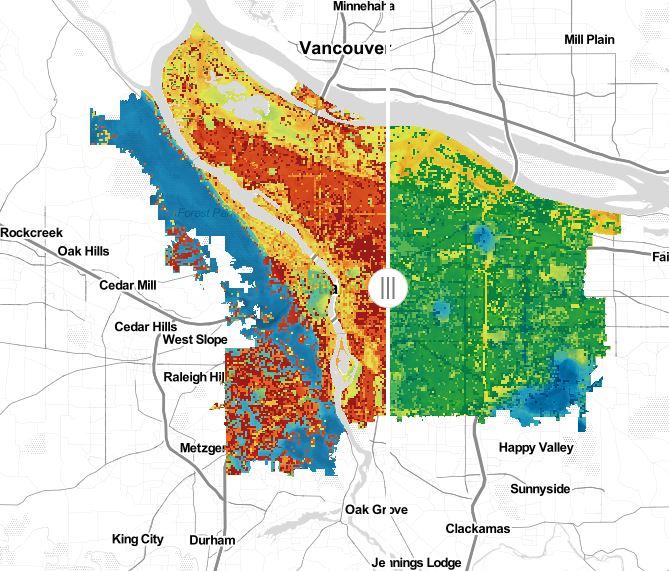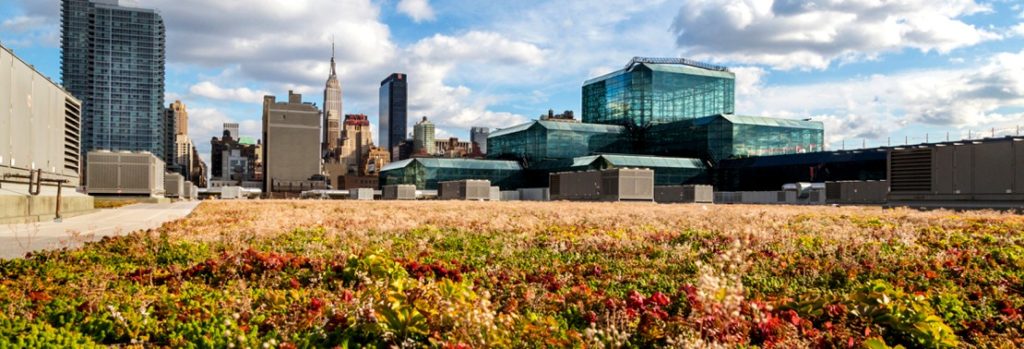Portland State University of EurekAlert writes:
Planting more vegetation, using reflective materials on hard surfaces and installing green roofs on buildings can help cool potentially deadly urban heat islands -- a phenomenon that exists in nearly all large cities -- a new study from Portland State University shows. Those solutions, however, present a growing challenge to developers and planners as neighborhoods become increasingly dense and single-family homes give way to apartment buildings.
Portland State study demonstrates how plants, trees and reflective materials can reduce extreme heat in city neighborhoods
Led by Urban Studies and Planning Professor Vivek Shandas and published in the May 21 edition of the journal Atmosphere, the study used computer modeling to show the temperature differences that can be made in a variety of property types – from tree-filled neighborhoods to heavily-paved industrial areas — through planting trees and vegetation, installing green roofs and using materials on roofs and pavement that reflect heat.
The modeling showed that the biggest differences came from using reflective materials and planting trees. Shandas said green roofs provided localized cooling of the roofs themselves, especially when watered, but that they needed to be studied further before they could be considered as a broader solution for urban heat. He noted, however, that green roofs provide other environmental benefits such as retaining storm water, controlling pollution and providing a habitat for wildlife.
The study was done at the request of the City of Portland, and may be used by city officials as a guide in Portland’s planning and development. The work also includes interactive maps showing every land parcel in the city, their pollution index levels, percent of vegetation canopy and more.
Read more: Portland State study shows ways to reduce extreme heat in city neighborhoods
 Greenroofs.comConnecting the Planet + Living Architecture
Greenroofs.comConnecting the Planet + Living Architecture









